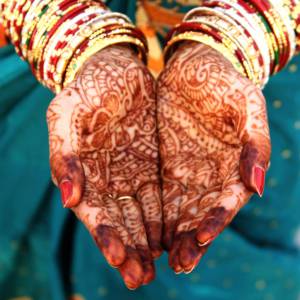Celebrating a Marriage in an Indian Tradition
Understanding the traditions from other cultures is important to building relationships with those outside of your own community. When Prime Minister Justin Trudeau appointed four Sikhs to his cabinet this November, he brought their culture to the forefront. Sikhs have been misunderstood for generations, not just here but around the world, including in their own country. Indian wedding traditions show an importance of family. Learn more about the heritage, in case you ever get invited to a wedding.
How Long Does the Ceremony Last?
An Indian wedding ceremony traditionally lasts three days. This does not mean that guests are expected to attend each part of the ceremony. Day one is typically for the bridal party and close relatives. The priest performs a ceremony known as the ganesh pooja. Day two is the mehndi ceremony, where the bride and female friends and relatives have henna patterns placed on their hands and feet. The bride is not expected to do any housework until the henna fades away. In the evening on day two, the wedding guests are invited to a sangeet, which is the introduction of families, a meal, and dancing or other performances.
On day three, the main ceremony takes place. In India, the groom might arrive on a decorated elephant or horse, but in today’s world, the groom would probably choose a luxury vehicle. Floral garlands are exchanged as part of the ceremony. In some parts of India, family members carry the bride and groom while they attempt to place these garlands on each other.
This main ceremony can take three hours. The bride’s parents give her to the groom, and the bride’s father requests that the groom accepts his daughter as an equal partner. The priest is there to lead the ceremony and ask for prayers, but traditionally he only facilitates the wedding. The groom ties a sacred thread around the bride’s neck, which is a symbol of his promise to take care of her. He places vermillion on her forehead, a symbol which welcomes her as his partner.
The bride and groom take seven steps with each other to confirm their eternal friendship. It is symbolic of the friendship they need for a relationship and that they will take part equally in the good and bad times of their marriage. The wedding may take place around a fire, which is representative of the fire god, Agni, one of the witnesses to the wedding. Circling the fire seven times is symbolic of the goals of the marriage, including prosperity, sensual gratification, and moral duties.
What to Wear and Bring
Indian wedding ceremonies are bright and colorful. The family often dresses very colorfully, in traditional saris and lenghas. Don’t be afraid to wear jewel-tones and your fancy jewelry. For women who wish to emulate their hosts, a shawl can mimic the look of a sari while complementing most dresses. Most invitations will specify no gifts at the wedding. Send gifts to the home of the bride or groom. There’s too much happening at the reception and ceremony for the family to be concerned about managing gifts.
The Reception
Following the third-day ceremony is a wild party with lots of food and dancing. Today, most receptions will include both traditional and contemporary music and dances. The bhangra is a folk dance from Punjab, and most people pick up the moves quickly.
Food at the reception varies based on the families’ preferences. Curries and naan, a flatbread, are common, as are samosas, which are a pastry filled with meats or vegetables. There may be a large dessert display including cake, ice cream, and other decorated sweets.
Indian weddings are all about the family and the joining of a couple for life. It’s a grand festival to bring not just two people together, but their families.


